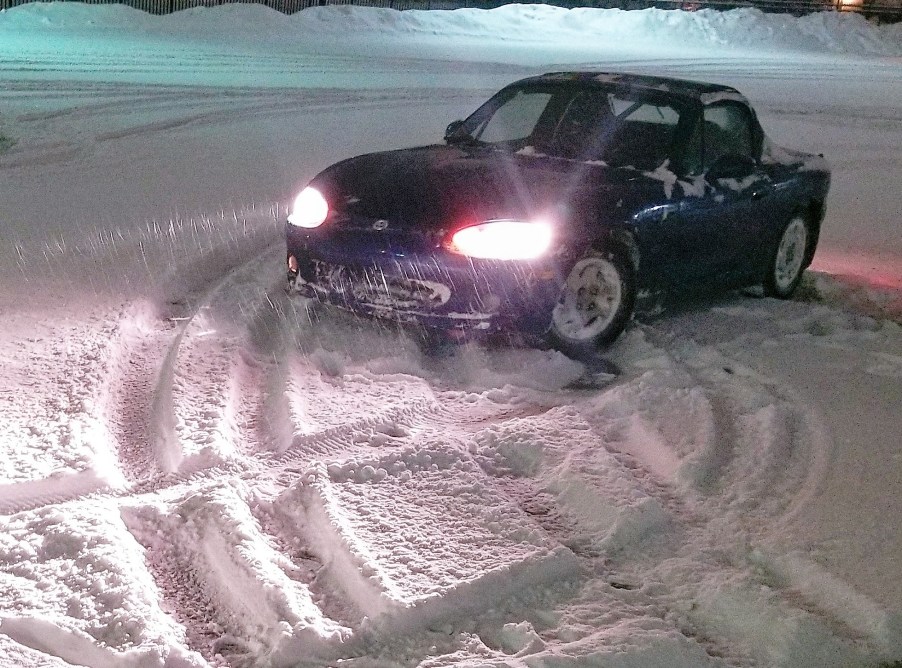
Does Cold Weather Affect Your Car’s Fuel Economy?
Winter is here and as the temperature outside drops, it’s easy to want to stay inside your house and bundle up. But unfortunately, you can’t do that all the time since, like most people, you need to work and run your errands, which means driving around for extended periods of time. But can the winter weather and cold temperatures take a toll on your car’s fuel economy?
Do cold temperatures affect your car’s gas mileage?
Yes, they do, and there are plenty of reasons as to why. According to Fueleconomy.gov, a regular gas-powered car can experience a drop in its fuel economy by up to 12 percent when the ambient outside temperature is at 20 degrees compared to when it’s 77 degrees. On shorter trips, around three to four miles in length, a car’s fuel economy can drop by as much as 24 percent. That’s a pretty big difference in fuel economy figures, so let’s take a look at some of the factors working against your car.

Engine oil becomes thicker
When you first start your car, the oil in the engine is much thicker due to being cold. And while the engine runs to get up to its normal operating temperature, all of its components create resistance – like trying to run in a pool filled with Jell-O. As you can guess, the added resistance from the parts as well as the thicker oil makes the engine work harder, thus using more fuel in the process.
Idling in the cold
Now that we know that the engine has to work harder due to thick oil, you can imagine what it’s like having it sit idling in the cold. In fact, your car gets 0 mpg while it sits idling in the cold, so the best thing for you to do is drive the car lightly for the first part of your trip to get the fluid moving around and the engine up to its proper temperature. Just remember not to hammer on the throttle too much while the engine is still cold.

Winter fuel
Believe it or not, the blend of gas that you pump into your car is different in the wintertime than it is in the summer. Federal law states that gas stations must sell different blends of fuel at different times of the year based on Reid Vapor Pressure (RVP), which is used to measure the fuel’s volatility.
The heat and cold affect how the fuel in your car’s tank evaporates, hence the difference between summer and winter blends. In the summertime, the fuel can evaporate more quickly with the hotter temperatures, so the RVP needs to be adjusted accordingly.
And in the wintertime, the opposite is true, however, the fuel needs to evaporate properly in order for your engine to start, so the RVP is tweaked again to accommodate the colder climate conditions. As you can guess, your car operates a little differently with each blend, which can in turn affect its overall fuel economy.

What can you do about poor fuel economy in cold weather?
While you might not be able to completely alleviate your car from the wrath of the winter cold, there are some measures that you can take to improve its fuel efficiency and overall operation.
- Park your car in a garage, or at least a warmer place, so that the engine and cabin temperatures are warmer from the get-go
- Combine your trips whenever possible to drive less often with a cold engine
- Check your car’s tire pressure regularly
- Don’t use the seat heaters more than necessary
- Since the engine will warm up faster when the car is driven, drive it gently to it up to the proper temperature. Doing so will allow the heat to turn on sooner and will equate to better gas mileage as well



